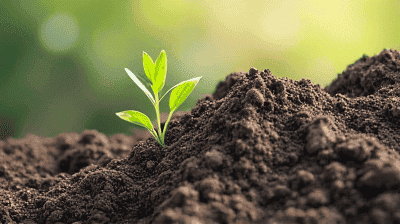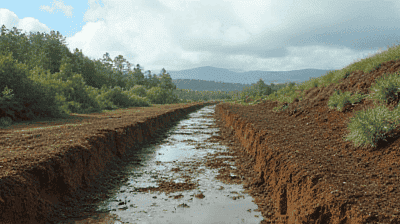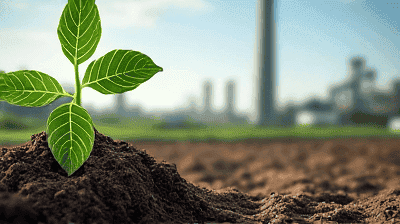
Landfills have long been a primary method for waste disposal, but their environmental impact is becoming increasingly concerning. The accumulation of waste in landfills leads to soil pollution, water contamination, and greenhouse gas emissions, all of which pose serious threats to ecosystems and human health. As societies strive for sustainability, it is essential to identify and implement best practices for reducing landfill waste and associated soil pollution.
Landfill waste consists of various materials, including organic matter, plastics, metals, glass, and hazardous substances, that are discarded and compacted in designated areas. Waste can be classified into several categories:
Municipal Solid Waste (MSW): This includes household waste generated from everyday activities, such as food scraps, paper, plastics, and textiles.
Construction and Demolition Waste: This category encompasses materials discarded from construction projects, such as concrete, wood, metals, and drywall.
Industrial Waste: Generated from manufacturing processes, this type of waste can include hazardous materials, byproducts, and packaging.
Hazardous Waste: This includes waste that poses a significant risk to human health or the environment due to its chemical composition, such as batteries, pharmaceuticals, and certain industrial chemicals.
Landfills contribute significantly to environmental pollution and resource depletion. Some of the key impacts include:
Soil Pollution: As waste decomposes, it can release harmful chemicals and leachates into the soil, contaminating groundwater and disrupting local ecosystems.
Greenhouse Gas Emissions: Decomposition of organic waste in landfills produces methane, a potent greenhouse gas that contributes to climate change.
Biodiversity Loss: Landfills encroach on natural habitats, leading to the loss of biodiversity and disruption of local wildlife.
Odor and Aesthetic Concerns: Landfills can generate unpleasant odors and diminish the aesthetic value of nearby areas, impacting local communities.

To alleviate the pressures of landfills and reduce soil pollution, individuals, businesses, and governments can adopt several best practices. These strategies focus on waste reduction, recycling, composting, and responsible disposal.
One of the most effective ways to reduce landfill waste is through conscious consumption. This involves:
Businesses can play a crucial role in waste reduction by re-evaluating their packaging methods. This includes:
Communities can establish comprehensive recycling programs to divert waste from landfills. Key components include:
Public awareness and education are vital for successful recycling initiatives. Strategies include:
Composting is an effective method for reducing organic waste and enriching soil. Efforts to promote composting include:
Composting not only diverts waste from landfills but also provides several benefits, such as:
Proper disposal of hazardous waste is crucial to preventing soil pollution. Strategies include:
Communities should implement specialized programs for the collection and disposal of hazardous waste, including:
Ensuring that hazardous materials are properly labeled and educating the public on safe disposal methods can reduce the risks associated with mishandling.
The concept of a circular economy emphasizes the importance of reusing materials and minimizing waste. Key actions involve:
Businesses can adopt lifecycle assessments to evaluate the environmental impacts of their products from production to disposal. This involves:
Promoting the sharing economy can significantly reduce waste generation. Examples include:
While reducing landfill waste is crucial, it is equally important to focus on mitigating and preventing soil pollution. Best practices to address soil contamination include:
Phytoremediation is an eco-friendly method that utilizes plants to absorb or stabilize contaminants in the soil. Implementing this practice can involve:
This technique involves the use of microorganisms to degrade pollutants in the soil. Key steps include:
Sustainable agricultural practices can play a significant role in preventing soil pollution and maintaining soil health:
Using organic farming methods reduces the risk of soil pollution through:
Regular soil testing and monitoring are essential for identifying contamination levels and managing soil health:

The role of policy and community engagement cannot be overstated in reducing landfill waste and soil pollution. Collaborative efforts between various stakeholders can lead to meaningful change.
Government policies play a pivotal role in promoting sustainable waste management and soil protection. Key initiatives include:
Implementing laws and regulations aimed at minimizing waste generation can drive significant change. Examples include:
Governments can support research and innovation in waste management technologies and soil remediation practices through grants and funding initiatives.
Community engagement is crucial for successful waste reduction and pollution control efforts. Strategies include:
Organizing clean-up events can raise awareness of pollution issues and promote community participation in combating litter and waste. This can include area clean-ups along roads, parks, and water bodies.
Community education initiatives can empower individuals to adopt sustainable practices. Implementing workshops, webinars, and outreach campaigns can foster greater understanding and action on waste reduction and soil protection.
Reducing landfill waste and mitigating soil pollution are challenges that require concerted efforts from individuals, businesses, and governments. Through the implementation of best practices such as waste minimization, recycling, composting, responsible disposal of hazardous waste, and adopting circular economy principles, we can significantly decrease the amount of waste entering landfills and protect our soils from contamination.
Investing in soil remediation techniques and sustainable agricultural practices will not only prevent further pollution but also enhance soil health and promote ecological balance. By engaging communities, fostering collaboration, and implementing supportive policies, we can create a more sustainable future for our environment.